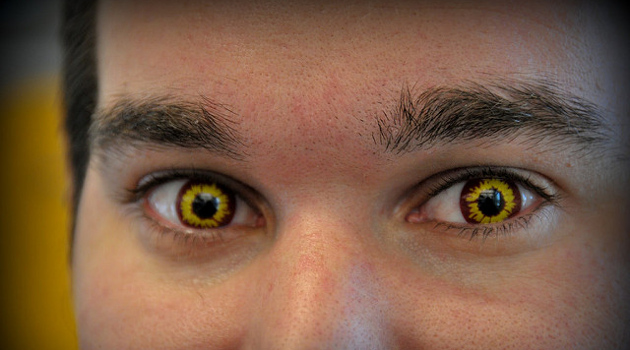This article originally appeared on FEE.org on October 29, 2016.
This Halloween, scores of consumers have purchased nearly 100,000 pairs of “counterfeit, illegal, and unapproved” colored contacts for costumes, all of which have been seized by “Double Vision,” an FDA-led consumer safety campaign.
No one is at risk from purchasing lenses from third-party contact lens vendors.Not surprisingly, optometrists and their favored lens manufacturers like Johnson & Johnson are using this news hook as a means of inciting fear. They are now stepping on the gas of their congressional lobbying efforts so that their bill, The Contact Lens Consumer Health Protection Act (CLCHPA), is passed into law.
The CLCHPA’s objective is to rid the country of the free market reforms brought about by The Fairness in Contact Lens Consumer Act (FCLCA), a 2003 bill that opened the contacts lens industry to free market competition for the first time.
Before the passage of this bill, eye patients had virtually no rights, while optometrists had almost total control over the sale of contact lenses. Doctors were not obligated to give patients copies of their prescriptions. As a result, they could mandate specifically where patients were allowed to purchase lenses. This usually meant that consumers had no choice but to purchase Johnson & Johnson’s Acuvue lenses—eye doctors’ favored brand—directly from optometrists at inflated retail costs.
The Republican-controlled Congress’ 2003 FCLCA legislation stopped this government-created monopoly by enforcing consumer rights. It forced doctors to give patients copies of their prescriptions and gave them only an 8-hour window to file complaints regarding third-party sale requests, halting the process of “pocket vetoing” valid sales.
As a result, consumers were left with far more buying options. With barriers to entry significantly curtailed, third-party lens sellers like Walmart, Costco, and 1-800 Contacts had a much easier time selling contacts. This, in turn, led prices for contact lenses to spiral downward, allowing over 41 million Americans to purchase more than$7 billion worth of contact lenses every year.
Eye Safety?
Enraged, optometrist associations and contact lens vendors like Johnson & Johnson immediately began lobbying Congress to change the law. For the past decade, they have been claiming that these third-party vendors are jeopardizing the eye safety of millions of Americans. Specifically, they have expressed concern that these lenses pose a risk of developing keratitis, an eye infection affecting the cornea.
For these reasons, members of the medical lobby drafted the CLCHPA, a new bill that will greatly increase regulations in the contact lens industry, making it extremely difficult for third-party lens vendors to stay in business.
The bill is a solution in search of a problem. It will re-capture the contact lens industry and propel prices upwards, all while failing to increase safety even the slightest degree.
It is ridiculous that some doctors are correlating buying contact lenses from reputable third-party companies like Costco, Walmart, and 1-800 Contacts with purchasing them illegally from a Halloween street vendor.
For one, the lenses sold by third-party sellers are federally regulated. You still need a prescription to purchase contact lenses from online sellers (although numerous studies, as well as practices in other nations, have shown that even prescriptions are not necessary), and doctors still have the ability to strike down each sale if there is a legitimate health concern.
The only risk that third-party vendors pose is to the market share of the crony medical lobby.In a letter written to the CLCHPA’s authors, Dr. Paul B. Donzis, a professor of ophthalmology at UCLA, made clear that buying contacts from online sellers poses no danger. “Based on…authoritative scientific articles, it appears that online sales of contact lenses have not contributed to any increase in the incidence of contact lens related injury,” he said.
Moreover, the medical studies match the doctor’s rhetoric. A 20-year epidemiologic study conducted by Doctors Schein, Stapleton, and Keay, published in 2007 by the medical journal Eye & Contact Lens, found that there has not been any increase in microbial keratitis since the online contact industry sprouted up and began providing more and better affordable choices for consumers.
The empirical data is as clear as day: no one is at risk from purchasing lenses from third-party contact lens vendors. The only risk that third-party vendors pose is to the market share of the crony medical lobby.
This Halloween, Congress should not be duped by the false claims coming from the mouths of the medical lobby. Congress is tricked often enough. This time, they should give American families a treat by reading through these prominent medical studies and striking down the anti-consumer Contact Lens Consumer Health Protection Act (CLCHPA) once and for all.
———
Image credit: ArunKamaraj | CC BY-SA 2.0.

